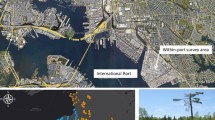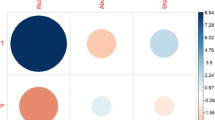Abstract
Tree killing and saprophytic bark beetles exert important ecological and economic roles in North American spruce forests. Chemical signaling among bark beetles, and responses by associate insects such as predators and competitors, have significant effects on the population dynamics and ecology of this community. Synthetic pheromones of primary (tree killing) and secondary (saprophytic) bark beetle species and blank controls were tested using multiple funnel and lower stem flight traps in white spruce forests in Wisconsin, Michigan, and Minnesota. Six phloeophagous and four predaceous species were collected with significant attraction by the bark beetles Dryocoetes affaber, Dryocoetes autographus, and Polygraphus rufipennis, and the predatory checkered beetles (Coleoptera: Cleridae) Thanasimus dubius and Enoclerus nigrifrons. In general, trap catches to synthetic lures resembled the species composition obtained by felling trees and collecting emerging beetles in a companion study, although several species showed differing trends. Some cross attraction occurred among bark beetles and between bark beetles and predatory beetles. For example, P. rufipennis was abundant in traps baited with Dryocoetes spp. pheromones. Thanasimus dubius and E. nigrifrons were collected in significant numbers in traps baited with the pheromone of the spruce beetle (Dendroctonus rufipennis), frontalin plus α -pinene. This is a new observation for E. nigrifrons. Attraction of T. dubius to the pheromones of at least three bark beetle species in the Great Lakes region, as well as to several southern and western species, reflects its role as a habitat specialist and feeding generalist. Several other important predators and competitors commonly obtained in pine forests in this region were not obtained in these spruce stands, either in response to synthetic pheromones of spruce colonizing beetles, or in host material colonized by these beetles. Potential differences in predator prey dynamics between spruce and pine ecosystems in the Great Lakes region are discussed.
Similar content being viewed by others
References
Aukema, B. H., Dahlsten, D. L., and Raffa, K. F. 2000a. Exploiting behavioral disparities among predators and prey to selectively remove pests: Maximizing the ratio of bark beetles to predators removed during semiochemically based trap-out. Entomol. Soc. Am. 29:652–660.
Aukema, B. H., Dahlsten, D. L., and Raffa, K. F. 2000b. Improved population monitoring of bark beetles and predators by incorporating disparate behavioral responses to semiochemicals. Entomol. Soc. Am. 29:619–628.
Ayres, M. P., Lombardero, M. J., Ayres, B. D., and Santoro, A. E. 1999. The Biology and Management of Bark Beetles in Old Growth Forests of Itasca State Park. Great Lakes Institute. for Pine Ecosystems Research, Colfax, Wisconsin, 136 pp.
Bentz, B. J. and Munson, A. S. 2000. Spruce beetle population suppression in Northern Utah. Western J. Appl. Forestry 15:122–128.
Billings, R. F. and Cameron, R. S. 1984. Kairomonal responses of Coleoptera, Monochamus titillator (Cerambycidae), Thanasimus dubius (Cleridae), and Temnochila virsecens (Trogositidae), to behavioral chemicals of southern pine beetles (Coleoptera:Scolytidae). Environ. Entomol. 13:1542–1548.
Bousquet, Y. and Laplante, S. 1999. Les Coleopteres Histerides du Quebec. Association des entomologistes amateurs du Quebec, Faberies, Supplement 8, 190 pp.
Bowers, W. W., Gries, G., Borden, J. H., and Pierce, H. D., Jr. 1991. 3-methyl-3-buten-1-ol: An aggregation pheromone of the four-eyed spruce bark beetle, Polygraphus rufipennis (Kirby) (Coleoptera: Scolytidae). J. Chem. Ecol. 17:1989–2002.
Burns, R. M. and Honkala, B. H. 1990. Silvics of North America, Vol. 1: Conifers. USDA FS Agr. Handbk. 654. Washington, DC, 675 pp.
Camacho, A., Pierce, H. D., and Borden, J. H. 1993. Geometrical and optical isomerism of pheromones in two sympatric Dryocoetes species (Coleoptera: Scolytidae) mediates specificity and response level. J. Chem. Ecol. 19:2169–2182.
Camacho, A., Pierce, H. D., and Borden, J. H. 1994. Aggregation pheromones in Dryocoetes affaber (Mann.) (Coleoptera: Scolytidae) stereoisomerism and species specificity. J. Chem. Ecol. 20:111–124.
Dodds, K. J. and Stephen, F. M. 2000. Partial age-specific life tables for Monochamus titillator in Dendroctonus frontalis infested loblolly pines. Entomol. Exp. Appl. 97:331–338.
Drooz, A. 1985. Insects of Eastern Forests, pp. 237–376. USDA (Misc. Pub. No. 1426).
Erbilgin, N. and Raffa, K. F. 2001a. Kairomonal range of generalist predators in specialized habitats. Entomol. Exp. Appl. 99:205–210.
Erbilgin, N. and Raffa, K. F. 2001b. Modulation of predator attraction to pheromones of two prey species by stereochemistry of plant volatiles. Oecologia 127:444–453.
Erbilgin, N. and Raffa, K. F. 2002. Association of declining red pine stands with reduced populations of bark beetle predators, seasonal increases in root colonizing insects, and incidence of root pathogens. For. Ecol. Manage. 164:221–236.
Gara, R. I., Werner, R. A., Whitmore, M. C., and Holsten, E. H. 1995. Arthropod associates of the spruce beetle Dendroctonus rufipennis (Kirby) (Col., Scolytidae) in spruce stands of south-central and interior Alaska. J. Appl. Entomol. 119:585–590.
Greenwood, M. E. and Borden, J. H. 2000. Co-baiting for spruce beetles, Dendroctonus rufipennis, and western balsam bark beetles, Dryocoetes confusus (Coleoptera: Scolytidae). Can. J. For. Res. 30:50–58.
Haberkern, K. E. 2001. Subcortical insects and fungal associates colonizing white spruce in the Great Lakes region. MS Thesis, Department of Entomology, University of Wisconsin, Madison, Wisconsin, 102 pp.
Haberkern, K. E., Illman, B., and Raffa, K. F. 2002. Bark beetles and fungal associates colonizing white spruce in the Great Lakes region. Can. J. For. Res. 32:1137–1150.
Herms, D. A., Haack, R. A., and Ayres, B. D. 1991. Variation in semiochemical-mediated prey–predator interaction: Ips pini (Scolytidae) and Thanasimus dubius (Cleridae). J. Chem. Ecol. 17:1705–1714.
Jeans-Williams, N. L. 1999. Evaluation of pheromone baits for the western balsam bark beetle, Dryocoetes confusus Swaine (Coleoptera: Scolytidae) and partial elucidation of the pheromone for Dryocoetes autographus Ratzeburg. Master of Pest Management Thesis, Simon Fraser University, Burnaby, British Columbia, 43 pp.
Klepzig, K. D., Raffa, K. F., and Smalley, E. B. 1991. Association of an insect–fungal complex with red pine decline in Wisconsin. For. Sci. 37:1119–1139.
Lanier, G. N., Claesson, A., Stewart, T., Piston, J., and Silverstein, R. M. 1980. Ips pini: The basis for interpopulational differences in pheromone biology. J. Chem. Ecol. 6:677–687.
Lindgren, B. S. 1983. A multiple funnel trap for scolytid beetles (Coleoptera). Can. Entomol. 115:299–302.
Mazur, S. 1997. A World Catalogue of the Histeridae (Coleoptera: Histeroidea). Polish Taxonomical Society, Wroclaw, Poland, 373 pp.
McCambridge, W. F. and Knight, F. B. 1972. Factors affecting spruce beetles during a small outbreak. Ecology 53:830–839.
Mizell, R. F., Frazier, J. L., and Nebecker, T. E. 1984. Response of the clerid predator Thanasimus dubius (F.) to bark beetle pheromones and tree volatiles in a wind tunnel. J. Chem. Ecol. 10:177–187.
Poland, T. M. and Borden, J. H. 1997. Attraction of a bark beetle predator, Thanasimus undatulus (Coleoptera: Cleridae), to pheromones of the spruce beetle and two secondary bark beetles (Coleoptera: Scolytidae). J. Entomol. Soc. Brit. Columbia 94:35–41.
Poland, T. M. and Borden, J. H. 1998a. Disruption of secondary attraction of the spruce beetle, Dendroctonus rufipennis, by pheromones of two sympatric species. J. Chem. Ecol. 24:151–166.
Poland, T. M. and Borden, J. H. 1998b. Competitive exclusion of Dendroctonus rufipennis induced by pheromones of Ips tridens and Dryocoetes affaber (Coleoptera Scolytidae). For. Entomol 91:1150–1161.
Raffa, K. F. 1991. Temporal and spatial disparities among bark beetles, predators, and associates responding to synthetic bark beetle pheromones: Ips pini in Wisconsin. Environ. Entomol. 20:1665–1679.
Raffa K. F. and Klepzig, K. D. 1989. Chiral escape of bark beetles from predators responding to bark beetle pheromones. Oecologia 80:566–569.
Rieske, L. K. and Raffa, K. F. 1993. Use of ethanol-and turpentine-baited flight traps to monitor Pissodes weevils (Coleoptera: Curculionidae) in Christmas tree plantations. Great Lakes Entomol. 26:155–160.
Schmid, J. M. and Freyes, R. H. 1977. Spruce beetle in the Rockies. USDA For. Serv. Gen. Tech. Rep. RM–49.
Schroeder, L. M. 1996. Interactions between the predators Thanasimus formicarius (Col., Cleridae) and Rhizophagus depressus (Col., Rhizophagidae), and the bark beetle Tomicus piniperda (Col., Scolytidae). Entomophaga 41:63–75.
Seybold, S. J., Bohlmann, J., and Raffa, K. F. 2000. Biosynthesis of coniferophagous bark beetle pheromones and conifer isoprenoids: An evolutionary perspective and synthesis. Can. Entomol. 132:1–57.
Stephen, F. M., Lih, M. P., and Wallis, G. W. 1989. Impact of arthropod natural enemies on Dendroctonus frontalis (Coleoptera: Scolytidae) mortality and their potential role in infestation growth, pp. 169–185, in D. L. Kulhavy, and M. C. Miller (Eds.). Potential for Biological Control of Dendroctonus and Ips Bark Beetles. Stephen F. Austin St. Univ., Nacogdoches, Texas.
Stock, A. J., Borden, J. H., Pratt, T. L., Pierce, H. D., and Johnston, B. D. 1990. Endo-brevicomin: an antiaggregation pheromone for the western balsam bark beetle, Dryocoetes contusus Swaine (Coleopten: Scotytidae). Can. Entomol. 122:935–940.
Wallin, K. F. and Raffa, K. F. 2001. Effects of folivory on subcortical plant defenses: Can defense theories predict interguild processes? Ecology 82:1387–1400.
Werner, R. A. 1993. Response of the engraver beetle, Ips perturbatus, to semiochemicals in white spruce stands of interior Alaska. Research paper PNW-RP-465. U.S. Department of Agriculture, Forest Service, Portland, Oregon.
Werner, R. A. 2002. Effect of ecosystem disturbance on diversity of bark and wood-boring beetles (Coleoptera: Scolytidae, Buprestidae, Cerambycidae) in white spruce (Picea glauca [Moench] Voss) ecosystems of Alaska. Res. Pap. PNW-RP-546. U.S. Department of Agriculture, Forest Services, Pacific Northwest Res. Sta, Portland, Oregon. 15 p.
Werner, R. A. and Holsten, E. H. 1983. Mortality of white spruce during a spruce beetle outbreak on the Kenai Peninsula in Alaska. Can. J. For. Res. 13:96–101.
Werner, R. A. and Holsten, E. H. 1984. Scolytidae associated with white spruce in Alaska. Can. Entomol. 116:465–471.
Wood, D. L. 1982a. The role of pheromones, kairomones, and allomones in the host selection and colonization behavior of bark beetles. Annu. Rev. of Entomol. 27:411–446.
Wood, S. L. 1982b. The bark and ambrosia beetles of North and Central America (Coleoptera: Scolytidae), a taxonomic monograph. Great Basin Naturalist Memoirs, No. 6. Brigham Young University, Provo, Utah. 1345, pp.
Author information
Authors and Affiliations
Corresponding author
Rights and permissions
About this article
Cite this article
Haberkern, K.E., Raffa, K.F. Phloeophagous and Predaceous Insects Responding to Synthetic Pheromones of Bark Beetles Inhabiting White Spruce Stands in the Great Lakes Region. J Chem Ecol 29, 1651–1663 (2003). https://doi.org/10.1023/A:1024231032149
Issue Date:
DOI: https://doi.org/10.1023/A:1024231032149




